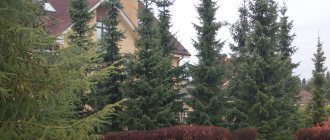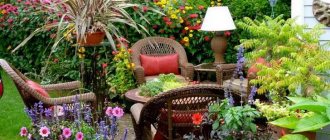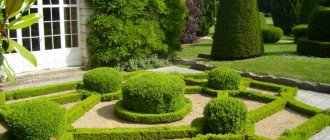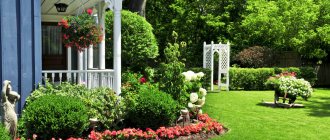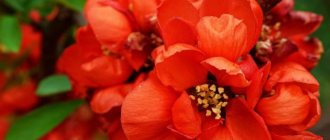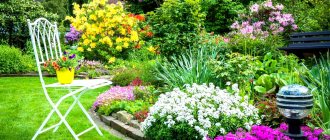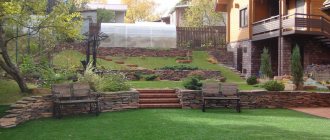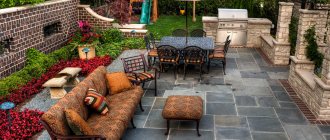Conifers do not shed their leaves for the winter, as happens with most deciduous representatives of the fauna. This property is their main advantage, which allows the use of pines, spruces and junipers in creating picturesque landscapes with evergreen vegetation. The variety of types and shapes makes it possible to choose coniferous plants for a specific situation: a hedge, a decorative composition, a background for a lawn or a mixed border.
How to compose compositions?
Conifers are quite unique plants in many respects. They rarely get sick and are subject to attacks by pests, and withstand the vagaries of the weather. Most do not require particularly fertile soil, although each species has its own preferences. Some shed their needles, like larch, others bloom pink in landscape design, like Crimean thuja. All these forms are classified as evergreens, and most purify the air, filling it with phytoncides that are destructive to pathogenic microflora. Compact trees, densely covered with needles, are quite impressive both in single plantings and in a general composition with other “neighbors”, as in the photo.
Decorating a cottage with coniferous plants
Landscape design with coniferous plants
The design of the site is usually divided into several zones, where certain types of plants will be in the center of the composition. Depending on the purpose, from a catalog or in a garden supermarket, you can choose or order different conifers. Most often they offer compact, dwarf and low-growing forms.
Attention! To suit your taste, you can choose any variety of pine, spruce, fir, cedar, larch, thuja, cypress or juniper. But there is one condition - they must be adapted and acclimatized to a specific region. Not all of them are organically perceived in the vicinity of decorative and fruit-bearing trees and shrubs.
Most evergreen forest beauties are in harmony with those trees and shrubs with which they usually coexist in the wild. These are oaks and birches, maples and rowan trees, hawthorn and rose hips.
Attention! You should not plant several conifers from different geographical zones nearby at once; this often looks unnatural.
“Northerners” can suppress stunted and dwarf forms native to the Mediterranean and Far Eastern regions with their phytoncides. And selective and hybrid forms will be oppressed by their natural relatives. Lebanese cedars and Siberian larches are considered the most “quarrelsome”.
Cottage design with coniferous plants
Coniferous composition on a summer cottage
Gardeners have noticed that most evergreens thrive in the shade, so they are planted behind the house on the north side. However, this does not apply to Mediterranean endemics and varieties of Christmas trees with light needles, which fade in the shade.
Cones are a natural dining area for many wild birds, which willingly flock to the site in winter and late autumn, filling the yard with joyful chirping. However, natural fertilizer after treating with seeds can spoil the appearance of a well-groomed coniferous composition in landscape design.
Most cultivated forms lend themselves well to “haircutting”; they can be given the most bizarre shapes - from elephants to precise spirals. But some coniferous plants get sick even if one branch is broken.
Decorating a cottage with coniferous plants
Landscape design with coniferous plants
Landscape design in coniferous composition
If you want to improve your garden plot with evergreen sculptures, you need to choose the right dense forms with small branches and short needles. You will also have to look for specialists who create real masterpieces. You should not experiment with living plants if you are not sure that such “creations” are within your power.
Take a close look at the examples in our photo gallery. Perhaps these ideas will inspire and suggest a new concept for the design of your site.
Expert opinion
Alina Kvileva
Landscape designer
Hello, my name is Alina and I am a landscape designer, if you have any questions regarding landscape design, ask, I will be happy to answer them.
See alsoRoses in landscape design
Scheme
A mixborder of conifers and shrubs (schemes are drawn up taking into account the location of the flower bed, its size, type and style of design) involves the selection of plants taking into account the composition of the soil, climate characteristics, and the compatibility of individual species.
To avoid gross mistakes that will later be difficult to correct, when drawing up a diagram, it is recommended to first make a paper drawing on which to indicate the places where certain plants will grow.
In this case, the following sequence is observed:
- Skeletal (the tallest and largest) plants that form the basis of the composition. Spruce, pine, and cypress trees are suitable for this purpose.
- Plants of the middle tier that fill the space behind the trunk circles of plants of the first type. Usually coniferous and evergreen shrubs are chosen - juniper, boxwood, Erica.
- Plants of the lower tier. These are flowering shrubs: jasmine, hydrangea, barberry, spirea, which will be complemented by conifers.
- Foreground plants. Usually decorated with flowering perennials or ivy, Cossack juniper, cotoneaster.
When determining a place for a particular element of a misborder, it should be taken into account that over time the trees will grow and will occupy a larger area than when planted, so it is better to mark the planting site not with a dot, but with a circle of the appropriate diameter.
The most attractive composition looks in which the distance between:
- tall trees - at least 2 m;
- medium and low growing shrubs – 1-1.5 m;
- low plants - 0.6-0.8 m.
It is also important to maintain the quantitative ratio of plants of different sizes.
For example, for a plot of 1 m2 area it is as follows:
- tall trees – 1 pc.;
- medium-sized trees and shrubs - from 5 to 8 pcs.;
- low shrubs – 10 pcs.;
- small ground cover plants – from 50 pcs.
When drawing up a diagram, you must remember that the mixborder needs constant care. It will be necessary to ensure free access to each of its elements. For example, if it is very large, it is advisable to provide paths.
Trees will take several years to grow. To prevent the mixborder from looking like a “desert” all this time, you can plant it with annual flowering plants, which will temporarily decorate the flower garden, but will not disturb its permanent “residents”. Mixborder designs made from conifers and shrubs come in varying complexity, sizes, and configurations.
They may be as follows:
| Name | Description |
| Compact flower bed | An excellent solution for a small area: a misk border does not take up much space, but looks very stylish. Its elements are:
It is recommended to plant trees and bushes in the order of their numbering; there should be a small distance between thujas and all other plants |
| Mixborder horizontal | A laconic and elegant composition consisting of 3 types of juniper:
However, without decorating with stones, it will look unfinished and lose its charm. |
| Flowerbed figured | In this simple composition, stones play an important role, shading and emphasizing the beauty of the conifers:
|
Creating a mixborder from conifers and shrubs is a complex matter, and any mistake regarding the choice of plants, the layout of their location relative to each other, and further care can be fatal, turning the flower garden into unattractive thickets.
However, if you know the basics of forming a mixborder and strictly follow them, patiently, step by step, carry out the necessary procedures, everything will work out.
Variations of coniferous forms
For most people, coniferous plants are fir trees and pine trees, which are usually decorated for the New Year holidays. They also include Siberian and Lebanese cedars, but the difference is not known to ordinary people. What the branches of larch, thuja, cypress or juniper look like is anyone's guess.
This is interesting. Each variety of conifers has its own subspecies, with large variations in the color of cones or berries, crown shape and needle length. Italian weeping pine trees are the same as pine trees, but the needles can reach 20-30 cm in length. And there are coniferous forms with large purple cones and small red rose-like cones. For landscaping arboretums, juniper with blue edible berries is used, and the variety with bright red fruits is poisonous. Young branches of decorative spruce trees can have a light green, golden or blue hue, examples are in the photo.
Coniferous composition on a summer cottage
Decorating a cottage with coniferous plants
When selecting coniferous compositions in landscape design, it is advisable to become more familiar with the species diversity of these relict plants. Botanists claim that conifers or gymnosperms reigned during the time of dinosaurs, replacing the era of tree-like horsetails and ferns. But they also find it difficult to answer how many natural varieties and subspecies these representatives of the kingdom of flora and fauna have.
Scientists annually discover new endemics in impenetrable virgin forests, which are used by breeders to breed decorative subspecies.
Landscape design with coniferous plants
Landscape design in coniferous composition
The main classification of conifers in nurseries is based on crown shape:
- spherical;
- ovoid,
- spiral;
- spreading flat-topped;
- crying;
- pyramidal;
- columnar;
- oval;
- creeping (flat);
- squat;
- rare crown.
The following forms are also distinguished:
- tall;
- medium height;
- short;
- creeping.
Attention! Over time, low-growing plants will look like medium-sized ones, while dwarf and compact conifers will take up more space. You should not plant them densely, so as not to spoil the original idea in the landscape design.
Cottage design with coniferous plants
Coniferous composition on a summer cottage
See also Decoration for a kindergarten group, photo.
Other conifers
The following types of conifers are less commonly used when creating mixborders:
- low-growing decorative varieties of cedar , differing from ordinary species not only in size, but also in slow growth. The main decoration of decorative cedar is its thick crown, which can have any shape;
- Torreya is a tree with stiff needles and fruits that resemble berries. Decorative varieties of torrei have a regular pyramidal shape and are used as the main element of the composition;
- larch is a weeping or creeping coniferous tree that is covered with wonderful flowers in the spring. There are several dozen types of decorative larch, differing in crown shape, size, and color of needles.
